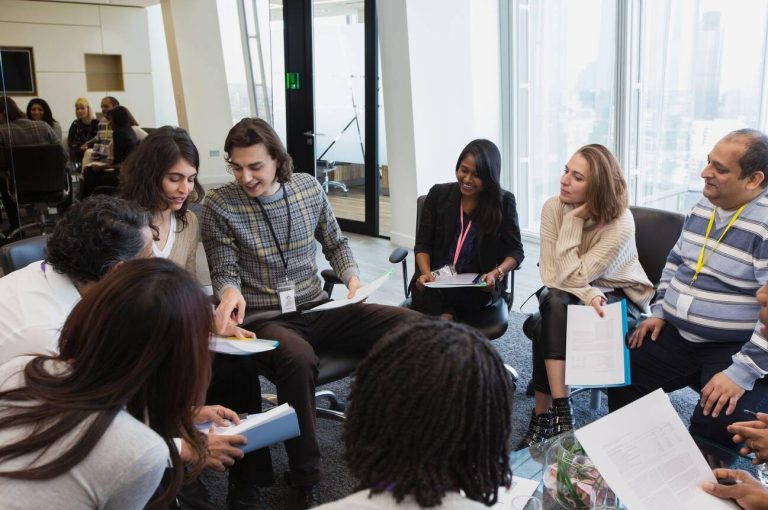As the Chancellor prepares to unveil the Budget later this week, the government faces critical questions over how to foster growth amid tight fiscal constraints. The stakes are high: persistent low productivity, weak business investment, and entrenched regional inequalities have weighed on the economy for far too long, while public services struggle to meet demand or expectations.
It’s a very challenging moment for the country. Since the Chancellor’s plan – understandably – is not to borrow and spend her way out of difficulty, it could also be a moment to take a radical and unflinching look at how government and public services actually work: only by doing things very differently are we going to get better results.
Through that lens, the government’s commitment to five ambitious missions for national renewal is exciting because it does hint at a different type of administration. Much more than a standard set of departmental targets, they are pitched as missions for the whole country – from boosting economic growth to making Britain a clean energy superpower.
That makes sense: the government in Westminster cannot by itself address all the complex challenges facing the UK. We need to harness the resources, insight and expertise of a much wider set of people: in universities, charities, trade unions, local government and, critically, business. In turn, that demands a fresh approach to the way that Whitehall is wired – one that moves beyond traditional governance models and embraces more open and fluid forms of collaboration.
FGF’s latest report, Mission Critical 02: Governing in partnership with business and trade unions, sets out a framework for how the government can structure these partnerships with businesses and workers amongst others, and foster the cultural changes necessary to make collaboration a core feature of policy-making and delivery.
There is some jeopardy here. Business leaders today express a degree of cynicism and fatigue with some of the dysfunctionality of government in recent years, including more presentational forms of ‘engagement’ in a variety of conferences, councils and roundtables. That form of PR-led partnership won’t achieve what’s needed. To make real change stick, and to start fulfilling its missions, the government will need to use its missions to adjust the culture: working with outside partners on a more open and equal basis, harnessing a wider pool of expertise than it has before, and learning and adapting as it goes along.
A new partnership
The government has already signalled its commitment to work with businesses and unions. Recent initiatives, including the Industrial Strategy Green Paper, Invest 2035, and the Employment Rights Bill, all point towards a more collaborative approach.
However, these efforts will only succeed if the insights and real-world experience of outsiders are embedded in policy design and implementation: people who can bring knowledge of market dynamics and investment trends, who are used to delivering frontline services, who understand workforce realities and employee or citizen experiences. By integrating these perspectives, the government can develop policies that are not only more effective but also better aligned with the real-world challenges facing the economy.
This approach may sound like hard work, but it can be successful when designed well. One very specific example of what’s possible is provided by the Low Pay Commission, which brings together representatives from business, unions, and government, and has consistently achieved consensus on the National Minimum Wage since its creation in 1997.
Five key recommendations
The FGF report outlines five specific recommendations to strengthen partnerships between government, business, and unions:
- Bring more experts in, by establishing Mission Councils aligned to Mission Delivery Boards: bringing together business, union, and government leaders to help develop ideas and govern mission delivery.
- Create a centre of excellence in the Mission Delivery Unit: a dedicated partnerships hub to be a focal point for business and union engagement, to set standards across Whitehall and facilitate cross-departmental collaboration.
- Promote a more open mindset across the civil service: recognise and spread best practice by integrating new standards of stakeholder engagement in policy submissions, business case development, and spending reviews. A Mission Secondments Programme would bring additional external expertise and fresh perspectives into Whitehall.
- Use technology to modernise stakeholder engagement: leveraging digital tools such as AI-driven consultation platforms and customer relationship management (CRM) systems to improve engagement with smaller organisations and enhance overall efficiency.
- Use data to learn and adapt: continuously collecting and analysing data from engagement activities, iterating based on what works, and publishing dashboards to track impact and delivery.
Seizing the moment
These recommendations are a starting point. They can be debated, and no doubt improved: just like the missions themselves. Less debatable is the simple diagnosis that something needs to change in how we administer our state. Few would argue that our current systems and processes of government have served the UK perfectly well in recent decades, or made best use of the resources and ingenuity of the country’s industries and its workforce. Fixing that should be something we all feel responsible for. Mission government, done well, is an opportunity to tap into that sense of responsibility and pull together to put us back on track.
—
Mission Critical 02 builds on the work of Mission Critical 01: Statecraft for the 21st century – a pioneering report written by Professor Mariana Mazzucato on putting mission-driven government into practice in the UK. Mission Critical 01 was the product of a collaboration between The Future Governance Forum and the UCL Institute for Innovation and Public Purpose.
Upcoming reports in the series will explore the nature of a mission-driven government’s relationships with civil society organisations, with different layers of government, and with citizens directly.





